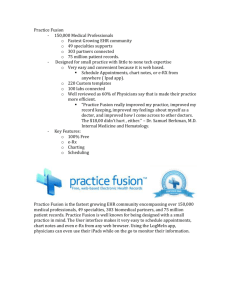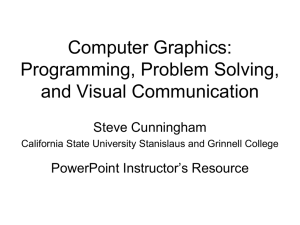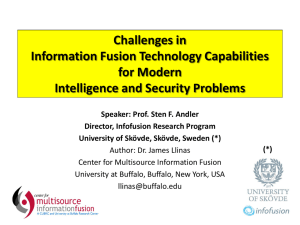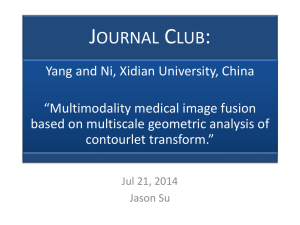General Information
advertisement
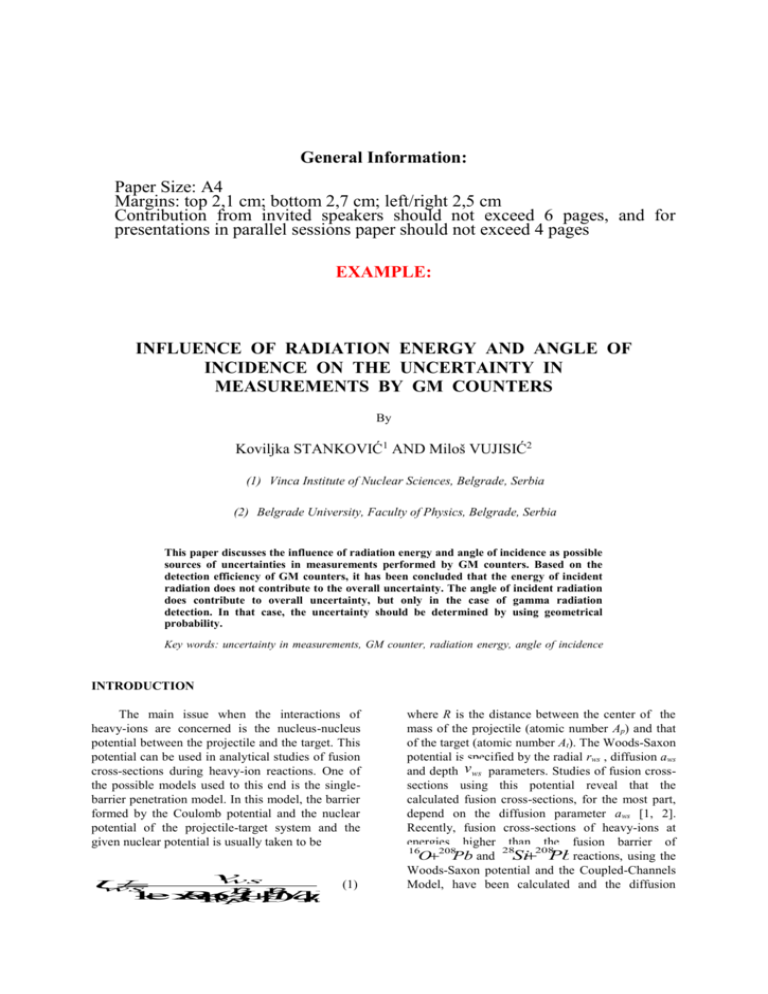
General Information:
Paper Size: A4
Margins: top 2,1 cm; bottom 2,7 cm; left/right 2,5 cm
Contribution from invited speakers should not exceed 6 pages, and for
presentations in parallel sessions paper should not exceed 4 pages
EXAMPLE:
INFLUENCE OF RADIATION ENERGY AND ANGLE OF
INCIDENCE ON THE UNCERTAINTY IN
MEASUREMENTS BY GM COUNTERS
By
Koviljka STANKOVIĆ1 AND Miloš VUJISIĆ2
(1) Vinca Institute of Nuclear Sciences, Belgrade, Serbia
(2) Belgrade University, Faculty of Physics, Belgrade, Serbia
This paper discusses the influence of radiation energy and angle of incidence as possible
sources of uncertainties in measurements performed by GM counters. Based on the
detection efficiency of GM counters, it has been concluded that the energy of incident
radiation does not contribute to the overall uncertainty. The angle of incident radiation
does contribute to overall uncertainty, but only in the case of gamma radiation
detection. In that case, the uncertainty should be determined by using geometrical
probability.
Key words: uncertainty in measurements, GM counter, radiation energy, angle of incidence
INTRODUCTION
The main issue when the interactions of
heavy-ions are concerned is the nucleus-nucleus
potential between the projectile and the target. This
potential can be used in analytical studies of fusion
cross-sections during heavy-ion reactions. One of
the possible models used to this end is the singlebarrier penetration model. In this model, the barrier
formed by the Coulomb potential and the nuclear
potential of the projectile-target system and the
given nuclear potential is usually taken to be
v
ws
(1)
U
ws
1
/
3 1
/
3
1
exp{[
R
r
(
A
A
/
a
}
ws
p
t )]
ws
where R is the distance between the center of the
mass of the projectile (atomic number Ap) and that
of the target (atomic number At). The Woods-Saxon
potential is specified by the radial rws , diffusion aws
and depth v ws parameters. Studies of fusion crosssections using this potential reveal that the
calculated fusion cross-sections, for the most part,
depend on the diffusion parameter aws [1, 2].
Recently, fusion cross-sections of heavy-ions at
energies higher than the fusion barrier of
16
O208Pb and 28Si208Pb reactions, using the
Woods-Saxon potential and the Coupled-Channels
Model, have been calculated and the diffusion
parameter has been reported to be about 1 fm [1].
The results are higher than those obtained by elastic
scattering. Since in the fusion process the surface
nucleons play an important role, the higher values
of the diffusion parameter might be associated with
the variations of the range of the nucleon-nucleon
potential. In this study, in order to ignore this
effect, we have taken the range of the nucleonnucleon interaction to be constant and equal to that
of the M3Y-Reid potential [3,4]. We have also
chosen a semi-microscopic approach. By choosing
an appropriate nucleon-nucleon interaction, while
keeping the range fixed and varying the depth and
the repulsive core of the nucleon-nucleon
interaction simultaneously, by a single parameter,
we will show that the variations in the diffusion
parameter are due to the many particle effect
corrections of the nucleon-nucleon potential. We
have simulated the nucleus-nucleus potential using
the Monte Carlo method instead of the commonly
employed double folding approach. In this
simulation method, the nucleus-nucleus potential
has been evaluated for heavy-ion reactions by
summing the effective interaction potentials
between the individual nucleons belonging to each
of interacting nuclei and by averaging them over
various acceptable positions of nucleons inside
each nucleus generated by the Monte Carlo method.
Instead of the DDM3Y potential [2], we have taken
the soft-core nucleon-nucleon interaction into
consideration in our calculations. Using this
potential, and taking into account a single
adjustable parameter, we have studied the
experimental fusion cross-sections for different
reaction at different energies.
Fusion cross-section
The total potential in the semi-classical model
is defined by
2l(l
1
)
V
(
R
)
V
(
R
)
V
(
R
)
l
N
C
2
2
R
(2)
2l(l
1
)
V
(
R
)
o
2
2
R
where VN , VC , Vo , and l are the Nuclear,
Coulomb , total potential for S-Wave , reduced
mass and relative momentum between the nuclei of
the projectile and the target, respectively. Using this
potential, the total fusion cross-section in terms of
the kinetic energy in the center of the mass form
has been calculated to be [5]
2
(
E
)
(
2
l
1
)
T
E
)
l(
2
E
l
0
(3)
where Tl is the penetration probability of the l-th
partial wave which, for energies lower than the
barrier, is approximately given by [5]
R
2
l
8
1
T
(
E
)
[
1
exp(
(
V
(
R
)
E
)
dR
)]
l
(4)
2l
R
1
l
where R1l and R2l are the classical turning points of
the l-th partial wave at energy E.
The calculated transmitting probability for the
l-th partial wave at energies higher than the fusion
barrier using Hill-Wheeler’s formula is given by [6]
1
2
(
V
E
)
Bl
T
E
)
1
exp
l(
l
(5)
where
1/2
d2V
l
l
2
dRR
(6)
Bl
and VBl is the height, RBl is the position and l is
the curvature of the barrier for the l-th partial wave.
Figure 4. Particle flux escaping an uranium target –
proton beam
Table 2. Neutron flux obtained from different target
materials
REFERENCES
[1] Pešić, M., Neutronic Design of an Accelerator Driven
Sub-Critical Research Reactor, Proceedings,
International Conference on New Frontiers of Nuclear
Technology: Reactor Physics, Safety and HighPerformance Computing – PHYSOR 2002, Seoul, Korea,
October 7-10, 2002, paper I0106


